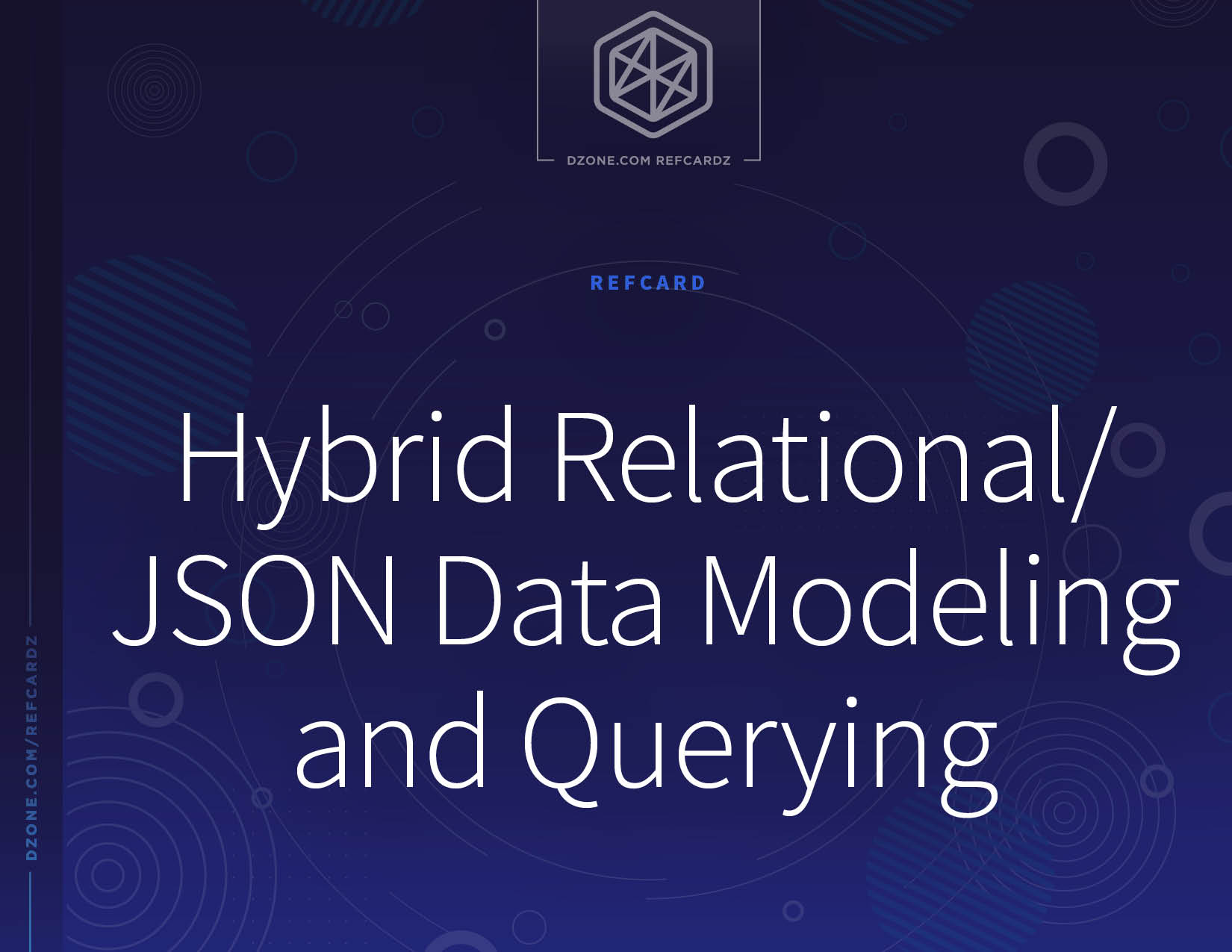Introduction
JSON has become the de facto standard for sending and receiving data — in particular, between application servers and the browsers/mobile applications connected to them. In the late 2000s, document databases such as MongoDB were built to store and query JSON documents.
Today, relational databases can store and query data as relations (i.e., rows and columns) or JSON — and with standard SQL.
There are a few ways to take advantage of the JSON support within relational databases:
- Storing data as relations, querying it as JSON documents.
- Storing data as JSON documents, querying it as relations.
- Storing data as relations with JSON documents, querying it as relations and/or JSON documents.
The third approach, hybrid relational/JSON data modeling and querying, is covered in this DZone Refcard.
This is a preview of the Hybrid Relational/JSON Data Modeling and Querying Refcard. To read the entire Refcard, please download the PDF from the link above.

